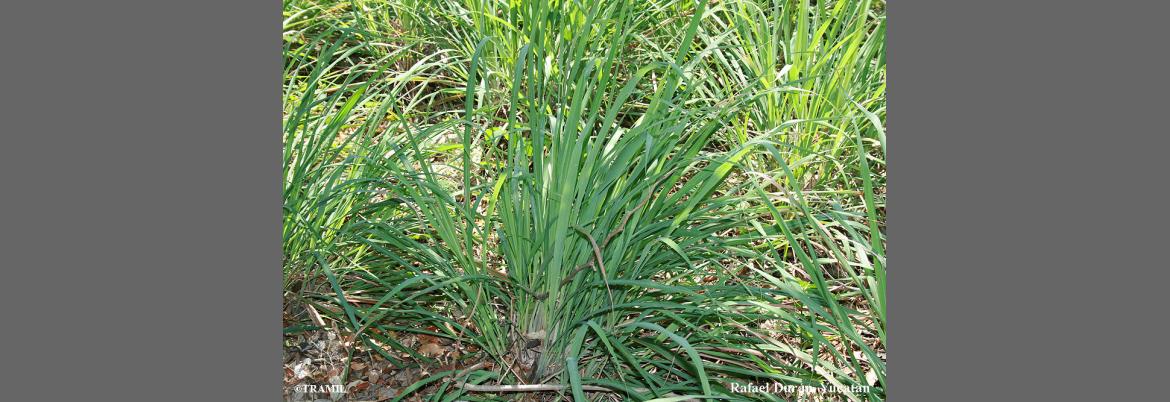1 LAGOS-WITTE S, 1988-89, 1996 Encuesta TRAMIL. Laboratorio de Histología Vegetal y Etnobotánica, Dep. de Biología, Universidad Nacional Autónoma de Honduras UNAH, Tegucigalpa, Honduras.
2 WENIGER B, ROUZIER M, 1986 Enquête TRAMIL. Service Oecuménique d'Entraide SOE, Port au Prince, Haïti.
3 GIRON L, 1988 Encuesta TRAMIL (Costa atlántica). Centro Mesoamericano de Tecnología CEMAT, Guatemala, Guatemala.
4 CHARLES C, 1988 TRAMIL survey. Movement for Cultural Awareness MCA, Roseau, Dominica.
5 GERMOSEN-ROBINEAU L, GERONIMO M, AMPARO C, 1984 Encuesta TRAMIL. enda-caribe, Santo Domingo, Rep. Dominicana.
6 JEAN-PIERRE L, 1988 TRAMIL survey. St. Lucia National Herbarium, Castries, St. Lucia.
7 FAUJOUR A, MURREY D, CHELTENHAM-CORBIN B, CARRINGTON S, 2003 TRAMIL survey. enda-caribbean, IICA & UAG, Saint Thomas, Barbados.
8 OCAMPO R, 1988 Encuesta TRAMIL (Costa atlántica), Instituto de Desarrollo Agrario, Universidad de Costa Rica, San José, Costa Rica.
9 LONGUEFOSSE JL, NOSSIN E, 1990-95 Enquête TRAMIL. Association pour la valorisation des plantes médicinales de la Caraïbe AVPMC, Fort de France, Martinique.
10 DELENS M, 1992 Encuesta TRAMIL en los Estados Lara y Sucre de Venezuela. Centro al Servicio de la Acción Popular CESAP, Caracas, Venezuela.
11 O'REILLY A, 1992 TRAMIL survey. Chemistry & Food Technology Division, Ministry of Agriculture, Dunbars, Antigua & Barbuda.
12 BENEDETTI MD, 1994 Encuesta TRAMIL. Universidad de Puerto Rico, Mayagüez, Puerto Rico.
13 MENDEZ M, MEDINA ML, DURAN R, 1996 Encuesta TRAMIL. Unidad de recursos naturales, Centro de Investigación Científica de Yucatán CICY, Mérida, México.
14 BALLAND V, GLASGOW A, SPRINGER F, GAYMES G, 2004 TRAMIL survey. IICA, UAG & U.PARIS XI, Saint Vincent.
15 ABEGAZ B, YOHANNES P, DIETER R, 1983 Constituents of the essential oil of Ethiopian Cymbopogon citratus. J Nat Prod 46(3):424-426.
16 DE MATOUSCHEK B, STAHL-BISKUP E, 1991 Phytochemical investigation of nonvolatile constituents ofCymbopogon citratus (DC.) Stapf. (Poaceae). Pharm Acta Helv 66(9/10):242-245.
17 HANSON S, CRAWFORD M, KOKER M, MENEZES F, 1976 Cymbopogonol, a new triterpenoid from Cymbopogon citratus. Phytochemistry15:1074-1075.
18 YOKOYAMA Y, TSUYUKI T, NAKAMURA N, TAKAHASHI T, HANSON S, MATSUSHITA K, 1980 Revised structures of cymbopogone and cymbopogonol. Tetrahedron Lett21:3701-3702.
19 OLANIYI A, SOFOWORA E, OGUNTIMEHIN B, 1975 Phytochemical investigation of some Nigerian plants used against fevers. II. Cymbopogon citratus. Planta Med 28:186-189.
20 WILLAMAN JJ, LI H, 1970 Alkaloid-bearing plants and their contained alkaloids, 1957-1968. Lloydia33(Supp.3A):1-286.
21 DUKE JA, ATCHLEY AA, 1986 Handbook of proximate analysis tables of higher plants. Boca Raton, USA: CRC Press. p57.
22 SAUVAIN M, MORETTI C, MUÑOZ V, 1990 Pruebas in vivo para paludismo realizadas en Bolivia sobre varias plantas TRAMIL. ORSTOM/IRD/IBBA, La Paz, Bolivia.
23 MORON F, SANCHEZ C, MARTINEZ MC, MOREJON Z, PINEDO Z, 2000 Actividad antiespasmódica in vitro de hojas frescas de Cymbopogon citratus (DC.) Stapf. Informe TRAMIL. Laboratorio Central de Farmacología, Facultad de Ciencias Médicas “Dr. Salvador Allende”, La Habana, Cuba.
24 MORON F, FURONES J, PINEDO Z, 1996 Ausencia de efectos antiinflamatorio y analgésico del extracto fluído de Cymbopogon citratus al 30% por vía oral. Rev Cubana Plant Med 1(2):3-6.
25 CARBALLO A, 1995 Plantas medicinales del Escambray cubano. Informe TRAMIL. Laboratorio provincial de producción de medicamentos, Sancti Spiritus, Cuba.
26 WENIGER B, ROUZIER M, DAGUILH R, HENRYS D, HENRYS J, ANTON R, 1986 Popular medicine of the central plateau of Haiti. 2. Ethnopharmacological inventory. J Ethnopharmacol 17(1):13-30.
27 CARLINI EA, CONTAR JD, SILVA-FILHO AR, SOLVEIRA-FILHO NG, FROCHTENGARTEN ML, BUENO OF, 1986 Pharmacology of lemon-grass Cymbopogon citratus I. Effect of teas prepared from the leaves on laboratory animals. J Ethnopharmacol 17(1):37-64.
28 SOUZA FORMIGONI ML, LODDER HM, FILHO OG, FERREIRA TM, CARLINI EA, 1986 Pharmacology of lemongrass (Cymbopogon citratus Stapf). II. Effects of daily two month administration in male and female rats and in offspring exposed "in utero". J Ethnopharmacol 17(1):65-74.
29 CARBAJAL D, CASACO A, ARRUZAZABALA L, GONZALEZ R, TOLON Z, 1989 Pharmacological study of Cymbopogon citratus leaves. J Ethnopharmacol25(1):103-107.
30 LAM L, ZHENG B, 1991 Effects of essential oils on glutathione S-transferase activity in mice. J Agric Food Chem 39(4):660-662.
31 LORENZETTI B, SOUZA G, SARTI S, FILHO DS, FERREIRA SH, 1991 Myrcene mimics the peripheral analgesic activity of lemongrass tea. J Ethnopharmacol 34(1):43-48.
32 LEMOS TLG, MATOS FJA, ALENCAR JW, CRAVEIRO AA, CLARK AM, MC CHESNEY JD, 1990 Antimicrobial activity of essential oils of Brazilian plants. Phytother Res4(2):82-84.
33 AWUAH R, 1989 Fungitoxic effects of extracts from some West African plants. Ann Appl Biol 115(3):451-453.
34 REYNOLDS JEF, PRASAD AB, Eds., 1982 MARTINDALE The extra pharmacopoeia. 28th ed. London, England: The Pharmaceutical Press. p677.
35 SETH, G, KOKATE CK, VARMA KC, 1976 Effect of essential oil of Cymbopogon citratus on central nervous system. Indian J Exp Biol 14(3):370-371.
36 DUKE JA, 1992 Handbook of biologically active phytochemicals and their bioactivities. Boca Raton, USA: CRC Press.
37 KOBAYASHI N, 1989 Pharmaceutical compositions containing lemongrass extracts and antioxidants. Patens Japan Kokai Tokio Koho., 01, 221, 320.
38 MARTINEZ MJ, BETANCOURT J, LOPEZ M, MOREJON Z, BARCELO H, LAINEZ A, MONTES ME, REGO R, BOUCOURT E, MORON F, 2000 Toxicidad aguda clásica de hoja seca de Cymbopogon citratus (DC.) Stapf.Informe TRAMIL. Laboratorio Central de Farmacología, Facultad de Ciencias Médicas “Dr. Salvador Allende”, La Habana, Cuba.
39 MARTINEZ MJ, BETANCOURT J, LOPEZ M, MOREJON Z, BOUCOURT E, MORON F, 2000 Actividad genotóxica in vitro de hoja seca de Cymbopogon citratus (DC.) Stapf. Informe TRAMIL. Laboratorio Central de Farmacología, Facultad de Ciencias Médicas “Dr. Salvador Allende”, La Habana, Cuba.
40 de la Torre RA, Espinosa-Aguirre JJ, Cortinas de Nava C, Izquierdo T, Moron F, 1994 Genotoxic activity of mebendazole in Aspergillus nidulans. Mutat Res 305(2):139-144.
41 LEITE JR, SEABRA ML, MALUF E, ASSOLANT K, SUCHECKI D, TUFIK S, KLEPACZ S, CALIL HM, CARLINI EA, 1986 Pharmacology of lemongrass (Cymbopogon citrates Stapf). III. Assessment of eventual toxic, hypnotic and anxiolytic effects on humans. J Ethnopharmacol 17(1):75-83.
42 CARBALLO A, 1995 Cálculo de concentración y dosis de las drogas vegetales TRAMIL: Mensuraciones farmacognósticas y aproximaciones técnico-clínicas. Laboratorio provincial de producción de medicamentos, Sancti Spiritus, Cuba.
43 DELAIGUE J, 2005 TRAMIL survey. UAG & PRDI, Tobago House of Assembly, Scarborough, Tobago.
44 ZambranoLE, 2007 Encuesta TRAMIL en Guareguare, Miranda. UCV, Caracas, Venezuela.
45 BALZ E, BOYER A, BURAUD M, 2007 Enquête TRAMIL à Marie-Galante. U. Bordeaux 3, U. Paris XI Chatenay-Malabry, UAG, Guadeloupe.
46 BOYER A, BURAUD M, 2007 Enquête TRAMIL à La Désirade. U. Paris XI Chatenay-Malabry, UAG, Guadeloupe.
47 OCRISSE G, 2008 Enquête TRAMIL auprès de 250 familles de la moitié Est de la partie francophone de St Martin. Biologie végétale, UAG, Guadeloupe.
48 BOULOGNE I, 2009 Enquête TRAMIL, (Terre-de-Bas et Terre-de-Haut) Les Saintes, UAG, Guadeloupe.






























